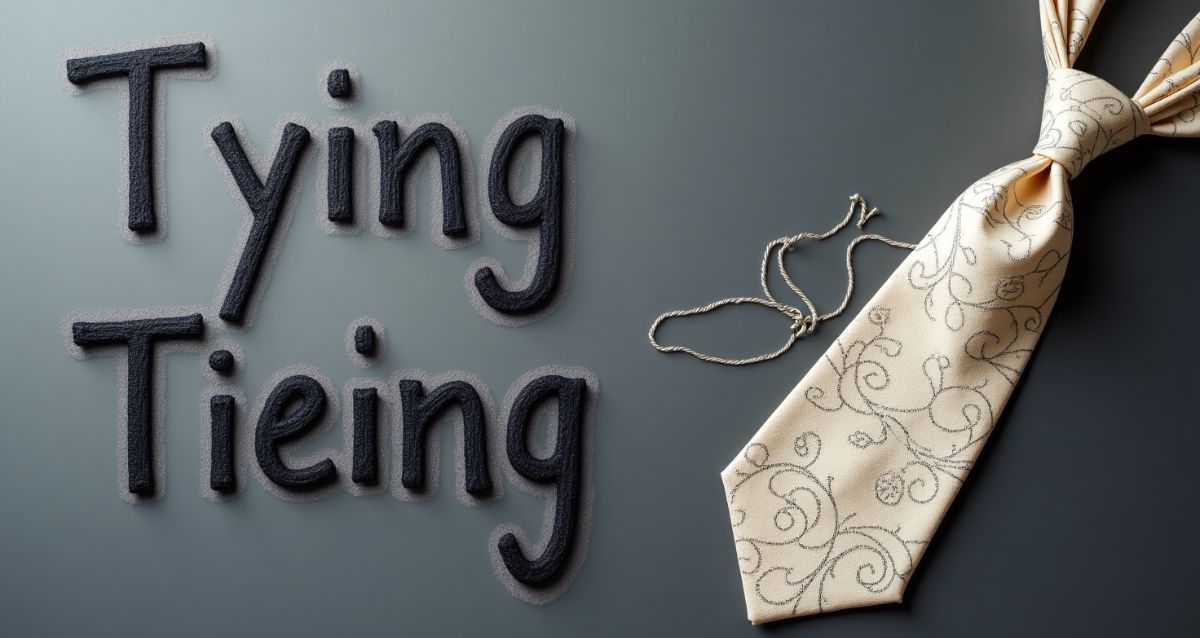Ever found yourself second-guessing whether you should write “tying” or “tieing” when describing the act of making a knot? You’re not alone in this common spelling dilemma. Let’s unravel this linguistic puzzle and explore why one form has become the standard in modern English.
The Quick Answer
Let’s start with the definitive answer: “tying” is the correct spelling in modern English. “Tieing” is considered outdated and is no longer accepted as standard usage. However, understanding the reasoning behind this can help you remember it better and improve your overall writing skills.
The Evolution of “Tying”
The word comes from the base verb “tie,” which has been part of the English language for centuries. When adding “-ing” to words ending in ‘e’, we typically drop the ‘e’. However, this word has an interesting historical twist that makes some people question the correct spelling.
Why People Get Confused
Several factors contribute to the persistent confusion between “tying” and “tieing”:
Historical Usage
In older English texts, you might occasionally encounter “tieing” as an acceptable variant. This historical usage sometimes bleeds into modern writing, causing uncertainty among writers.
Pattern Recognition
Many English words follow predictable patterns when adding “-ing”:
- die → dying
- lie → lying
- tie → tying
Notice how these words maintain the ‘y’ instead of an ‘i’. This pattern can seem counterintuitive to some writers.
Real-World Scenarios Using “Tying”

Let’s explore various contexts where this word commonly appears to help cement its proper usage in your mind.
In Fashion
Maria stood in front of her mirror, “I’m tying this scarf in a new way I learned from a styling video,” she explained to her roommate. Fashion contexts frequently use this word when describing accessorizing techniques.
In Sports
“The game is currently tying at 2-2,” announced the commentator during the intense soccer match. Sports commentary and reporting regularly employ this word to describe equal scores.
In Everyday Life
John was running late for work, frantically “tying” his shoelaces while trying to eat breakfast. This common morning scenario illustrates the word’s everyday usage.
Common Contexts and Examples
Let’s dive deeper into various situations where you might need to use this word:
Professional Settings
“We’re tying up loose ends before the end of the fiscal year,” the manager announced during the meeting.
Crafts and DIY
“I’m tying these ribbons into perfect bows for the wedding decorations,” Sarah said while preparing for her sister’s ceremony.
Cooking
“After tying the herbs together with kitchen twine, place them in the pot,” read the recipe instructions.
How to Remember the Correct Spelling
Here are some helpful memory aids to ensure you always use the correct form:
- The Y Rule
Remember that “tie” becomes “tying” just like “lie” becomes “lying” and “die” becomes “dying”. These words follow the same pattern. - Syllable Check
The word has two syllables: “ty-ing”. Hearing it this way in your head can help reinforce the correct spelling. - Visual Memory
Picture yourself tying a shoelace – one quick, smooth motion. The spelling “tying” reflects this smoothness, while “tieing” looks clunkier.
Different Uses of “Tying” in Sentences
Physical Actions
- “She was tying her hair into a neat ponytail.”
- “The sailor spent hours tying various nautical knots.”
- “Kids nowadays are learning about tying shoelaces later than previous generations.”
Metaphorical Uses
- “The company is tying its success to innovative technology.”
- “They’re tying the knot next spring.” (Getting married)
- “The author is tying all the plot threads together in the final chapter.”
Grammar Points to Remember

When using this word, keep these grammatical considerations in mind:
- Present Participle
“I am tying my shoes right now.” - Gerund Form
“Tying knots is an essential skill for sailors.” - Continuous Tense
“They were tying balloons to the fence all morning.”
Common Mistakes and How to Avoid Them
Here are some typical errors people make with this word:
tieing❌tyeing❌tiying❌- tying ✅
Professional Impact of Correct Usage
In professional writing, using the correct form can significantly impact your credibility. Whether you’re:
- Writing a business email
- Preparing a report
- Creating technical documentation
- Drafting a formal letter
Using “tying” correctly demonstrates attention to detail and strong language skills.
Final Thoughts
Mastering the correct spelling of commonly confused words like “tying” is crucial for effective communication in both personal and professional contexts. While the existence of variant spellings in historical texts might cause some confusion, modern English has standardized on “tying” as the correct form.









